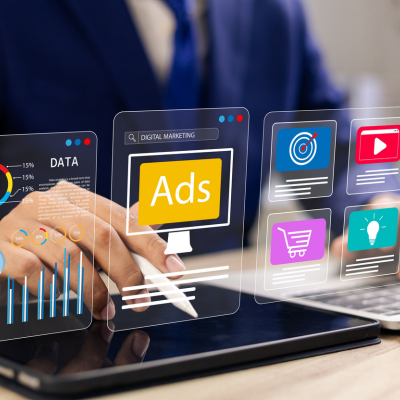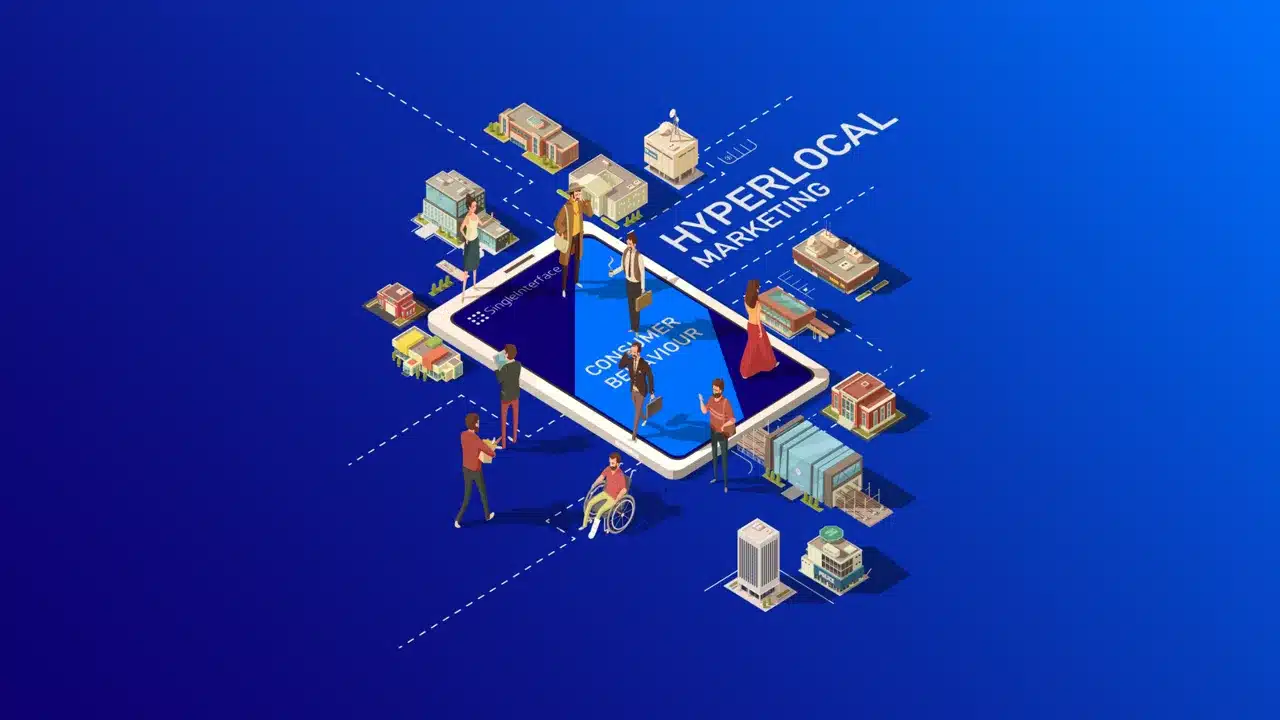Hyperlocal marketing is a powerful strategy that zeroes in on customers within an extremely specific geographic area—often just a few blocks or a single neighborhood. In an era where “near me” searches dominate and consumers expect immediate, relevant offers on their smartphones, businesses that master hyperlocal marketing gain a decisive edge. By combining location-based marketing, local SEO, mobile targeting, and community marketing, brands can connect authentically with nearby customers, driving foot traffic, engagement, and lasting loyalty. This article explores the evolution, tools, and advanced tactics of hyperlocal marketing, featuring a real-world case study and actionable insights. We also highlight how Amquest Education’s Digital Marketing and Artificial Intelligence course equips marketers with cutting-edge skills to excel in this dynamic field.
Background: The Evolution of Hyperlocal Marketing
Traditional local marketing often targeted broad areas—entire cities or regions. Hyperlocal marketing sharpens this focus to a radius as tight as 1-2 miles or specific neighborhoods, enabling brands to act local with laser precision. The widespread adoption of smartphones and mobile internet has accelerated this shift, making it essential for businesses to deliver offers and information tailored to customers’ immediate surroundings. Key milestones driving this evolution include:
- The surge in “near me” searches, reflecting consumers’ desire for instant access to nearby products and services.
- Advances in GPS and geo-fencing campaigns technologies that enable real-time location targeting and personalized messaging.
- The blending of online and offline channels to create seamless “phygital” experiences, where digital ads drive physical store visits and vice versa.
This tighter targeting fosters personalized marketing that builds trust by engaging customers where they live, work, and socialize.
Latest Features, Tools, and Trends in Hyperlocal Marketing
| Tool/Trend | Description | Benefit |
|---|---|---|
| Geo-fencing campaigns | Uses GPS or radio frequency to trigger ads or notifications when customers enter a specific area | Delivers timely offers, boosts foot traffic |
| Local SEO optimization | Tailors website content and business listings to rank higher for local and “near me” searches | Increases organic local traffic |
| Mobile targeting & SMS marketing | Sends SMS campaigns and push notifications with hyper-relevant messages to mobile users | Open rates up to 98%, drives immediate action |
| Paid social media ads | Facebook and Instagram local awareness ads with radius targeting | Highly customizable, tracks engagement |
| Community and event marketing | Sponsorships and participation in neighborhood events or pop-ups | Builds face-to-face community connections |
A recent study shows consumers are 80% more likely to purchase when they receive personalized local ads, highlighting the importance of hyperlocal marketing strategies.
Advanced Tactics for Hyperlocal Marketing Success
- Micro-segmentation: Divide your audience into hyper-specific groups based on street, block, or even device-level location data to tailor messaging with extreme precision.
- Cross-channel integration: Align digital ads, SMS, social media, and in-store promotions to create a unified, seamless customer journey.
- Local influencer partnerships: Collaborate with trusted neighborhood influencers who have authentic community credibility to amplify reach and engagement.
- AI-powered real-time analytics: Use tools like Google Tag Manager combined with machine learning insights to continuously optimize campaigns based on hyperlocal engagement metrics.
- User-generated content: Encourage customers to share local experiences, reviews, and photos, building social proof and community buzz around your brand.
Privacy and Ethical Use of Location Data
Hyperlocal marketing’s reliance on location data requires strict adherence to privacy laws like GDPR and CCPA. Transparency about data collection, clear consent mechanisms, and giving customers control over their data are essential to maintain trust. Marketers must balance personalization with respect for privacy to avoid alienating customers or facing regulatory penalties.
The Power of Content, Storytelling, and Community Engagement
Content that resonates locally builds emotional connections that generic ads cannot match. Stories about neighborhood heritage, local heroes, or community initiatives foster genuine loyalty. Effective content strategies include:
- Localized blog posts optimized for local SEO that highlight neighborhood events or customer spotlights.
- Video content featuring local staff or customers to enhance authenticity.
- Community-driven campaigns that invite participation, such as sponsoring food drives, school fundraisers, or partnering with local nonprofits.
A successful hyperlocal marketing strategy focuses less on sales pitches and more on becoming a trusted part of the neighborhood fabric.
Measuring Success: Analytics and Insights
- Track changes in foot traffic using location analytics tools before and after campaigns.
- Monitor local SEO rankings and the performance of “near me” queries.
- Analyze conversion rates from geo-fencing campaigns ads and SMS campaigns.
- Use customer feedback and online reviews to assess sentiment and brand perception.
These insights enable continuous improvement and ensure resources focus on the highest ROI activities.
Business Case Study: Domino’s Pizza Hyperlocal Campaign in Mumbai
Brand Journey: Domino’s aimed to boost delivery orders and foot traffic within Mumbai’s competitive neighborhoods.
Challenges: Intense local competition, diverse customer preferences, and the need for immediate, relevant engagement.
Tactics Used:
- Hyperlocal Google Ads with tight radius targeting around key outlets.
- SMS promotions timed around local festivals and cricket matches.
- Collaborations with Mumbai-based food bloggers as neighborhood influencers.
- Localized landing pages optimized for local SEO and “near me” searches.
Results:
- 25% increase in delivery orders within targeted neighborhoods.
- 30% uplift in foot traffic during campaign periods.
- 40% higher social media ad engagement compared to broader city-wide campaigns.
This campaign highlights the power of data-driven, hyperlocal marketing combined with local insights to drive measurable business growth.
Why Amquest Education’s Digital Marketing and Artificial Intelligence Course Excels
For marketers seeking mastery in hyperlocal marketing, Amquest Education offers a uniquely powerful blend of AI-driven learning and practical experience:
- AI-powered modules teach how to leverage machine learning for hyperlocal campaign optimization and dynamic creative adjustments.
- Hands-on projects simulate real-world hyperlocal marketing scenarios to build actionable skills.
- Experienced faculty with deep industry backgrounds provide mentorship and live feedback.
- Internships with leading partners in Mumbai and across India ensure job-ready expertise.
- Flexible learning options include a Mumbai-based campus and national online availability, tailored to local market dynamics.
This combination of AI innovation, practical exposure, and strong industry connections makes Amquest courses the top choice for mastering location-based marketing strategies.
Actionable Tips for Marketers
- Audit your local presence: Optimize your business listings, Google My Business profile, and website for local keywords and “near me” searches.
- Define your geographic radius: Start tight (1-2 miles) around your store or event, then expand based on campaign performance.
- Leverage SMS and push notifications: Send timely offers that create urgency and prompt immediate action.
- Partner with local influencers: Identify trusted community voices and collaborate on authentic content.
- Use geo-fencing: Deploy location-triggered ads to engage customers as they enter key zones.
- Create localized content: Develop blog posts, videos, and social media reflecting neighborhood culture to build emotional ties.
- Measure and iterate: Use analytics tools to track success and refine your approach continuously.
Conclusion
Hyperlocal marketing is no longer optional; it is essential for businesses aiming to win customers in their own neighborhoods. By combining location-based marketing, local SEO, mobile targeting, and authentic community marketing engagement, marketers can deliver highly relevant experiences that foster loyalty and growth. For those ready to gain cutting-edge expertise, Amquest Education’s Digital Marketing and Artificial Intelligence course offers an unmatched curriculum blending AI innovation with practical local marketing tactics. Start mastering hyperlocal marketing today and position yourself at the forefront of this dynamic field. Explore the Digital Marketing and Artificial Intelligence course at Amquest Education now »
FAQs
1. What is hyperlocal marketing and how does it differ from local marketing?
Hyperlocal marketing targets customers within a very small geographic area, such as a neighborhood or a few blocks. Local marketing targets broader areas like a city or region. Hyperlocal strategies use location-based marketing ads, local SEO, and community marketing engagement to connect deeply with nearby customers.
2. How does location-based marketing enhance hyperlocal campaigns?
By using GPS and geo-fencing campaigns, location-based marketing delivers ads or messages based on users’ real-time location, making promotions timely and highly relevant, which increases engagement and conversions.
3. What role does local SEO play in hyperlocal marketing?
Local SEO optimizes your online presence to rank higher for local and “near me” searches on Google and maps, helping nearby customers find your business precisely when they need it.
4. How can mobile targeting improve local customer engagement?
Mobile targeting reaches customers on smartphones via SMS, push notifications, and mobile ads, which typically have higher open rates and prompt faster responses than emails.
5. What are geo-fencing campaigns and why are they effective?
Geo-fencing campaigns create a virtual boundary around a location; when users enter this area, they receive targeted ads or offers. This immediacy drives foot traffic and boosts sales by reaching consumers at the right place and time.
6. How does Amquest Education’s course prepare marketers for hyperlocal marketing?
Amquest’s Digital Marketing and Artificial Intelligence course combines AI-led learning, hands-on projects, expert mentorship, and internships in Mumbai and nationally. This blend ensures marketers gain practical skills and industry readiness to implement advanced hyperlocal marketing strategies effectively.










